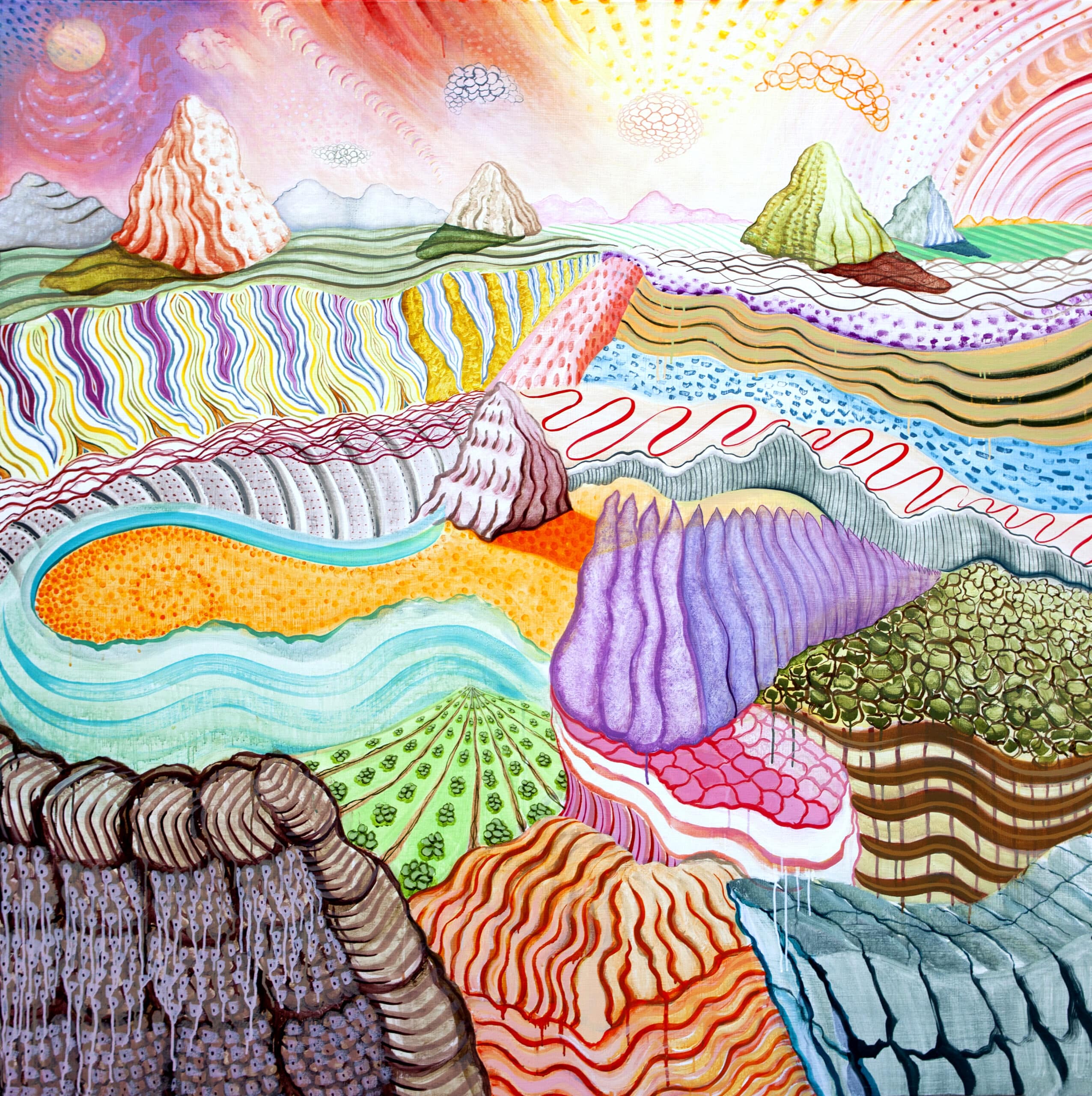Traversing the spectrum of abstract landscapes, artist Lily Prince vividly captures the essence of America’s Southwest and Italy’s Lake Como in her celebrated collection, aptly named American Beauty. This series, along with the mesmerizing Lago di Como, make up the exhibition Both Sides Now, which recently concluded at Carrie Chen Gallery in Great Barrington, Massachusetts.
Originating with oil pastel drawings crafted in the open air, Both Sides Now captures the raw essence of each environment. Prince later refines these inspirations in her Hudson Valley studio, immortalizing them through acrylic and watercolor compositions. The en plein air approach brings a contemplative serenity to the artwork, but it’s the adventurous immersion in the wilderness that anchors their spirit.
As her partner, chauffeur, and occasional guide, I’ve watched Prince’s artistic journey up close. Drawing from Italy’s Lake Como presented a reflective, distanced involvement, often observed from the cozy confines of a local café.
In contrast, the creation of American Beauty was a joint exploration. Our mobile studio—a spacious rental car—frequently veered from bustling Southwestern roads to secluded enclaves where these landscapes came to life through Prince’s pastels, deftly sketched amid the desert’s unforgiving heat and the blur of nearby traffic.
These fleeting moments, captured in drawings, ask what will be preserved, transformed, or fused together to form the finished pieces that embody Both Sides Now.
The Southwest, particularly New Mexico, whispers echoes of a complex history. Here, in the stark desert, one encounters signs pointing to places like Los Alamos and Roswell—each name steeped in deep cultural significance. It’s where the narrative of America’s atomic age and extraterrestrial mythos unfolds against the backdrop of New Mexico’s landscapes. Prince’s reverence for the region is tangible, as she visits and artistically interprets places like Georgia O’Keeffe’s Ghost Ranch—a journey akin to a sacred pilgrimage.
American Beauty’s creation resembles an archaeological dig, whereas Lago di Como embodies the art of sifting and refining. Reflecting on Lake Como reveals an ever-shifting tapestry of light, a spectrum that dances across the water’s surface from dawn till dusk.

Lake Como’s immense water body churns with ever-changing hues and rhythms, shaping the shadows that stretch across the day and into the evening, always in motion, never ceasing.
In “Araby” by James Joyce, we see the protagonist’s desire to protect an idealized image—a symbol of innocence—as he navigates his surroundings. This same protective journey resonates in Both Sides Now, where the observer encases impressions and experiences as treasured relics.
In encountering Both Sides Now, one steps into a world of lush expanses illustrated in American Beauty and Lago di Como. The viewer is elevated to a privileged position, looking down onto landscapes that evoke a profound sensory engagement.
The distance and breadth of these vistas in American Beauty contrast with the vertical interpretations required by Lago di Como. The grandeur of Lake Como feels like an immense entity, an optical marvel that captivates with its depth and imperial grandiosity.
American Beauty paints the Southwestern terrain in a palette of pinks, purples, and oranges amidst its unforgiving, cryptic topography. The works convey not just the physical landscape but hint at the rich history and tragedy of the Native peoples who thrived and suffered here. The vibrancy and echoes of the region infuse the canvas, bringing its spirit and intricacies to life.
The concept of a palimpsest—a layered manuscript—is a metaphor for American Beauty and Lago di Como. These works suggest layers of history, culture, and artistry, each era shading and molding the next. In them, time is a woven tapestry, connecting past and present.
The musicality of Italian towns—Cernobbio, Bellagio, Varenna—reverberates throughout Lago di Como. Meanwhile, American Beauty is strictly a daylit world, one that subtly conceals an undercurrent of anxiety. Here lies an ancient fear of becoming lost in an unforgiving landscape, but it is tempered by an intermittent promise of unexpected guardianship.
Both American Beauty and Lago di Como explore the skies with depth and pattern. Beneath the surface lies an artistic legacy that connects back to Prince’s familial roots in embroidery, celebrating humanity’s innate desire to create and adorn.
Viewers embarking on a sensory voyage through Both Sides Now may feel as if they are the landscape itself, the robust spectrums and intricate patterns of American Beauty juxtaposed against Lago di Como’s serene symmetry. The works elevate the onlooker, immersing them within a world of heightened awareness, akin to a vivid dream.
Near Lake Como’s painted borders, one can almost hear the slice of ferries through water and visualize the vibrant life that pulses around—churches, cafés, bakeries, and gelaterias. American Beauty may not explicitly reference the vibrant local culture of the Southwest, but its presence is felt, absorbed into the very essence of Prince’s works.